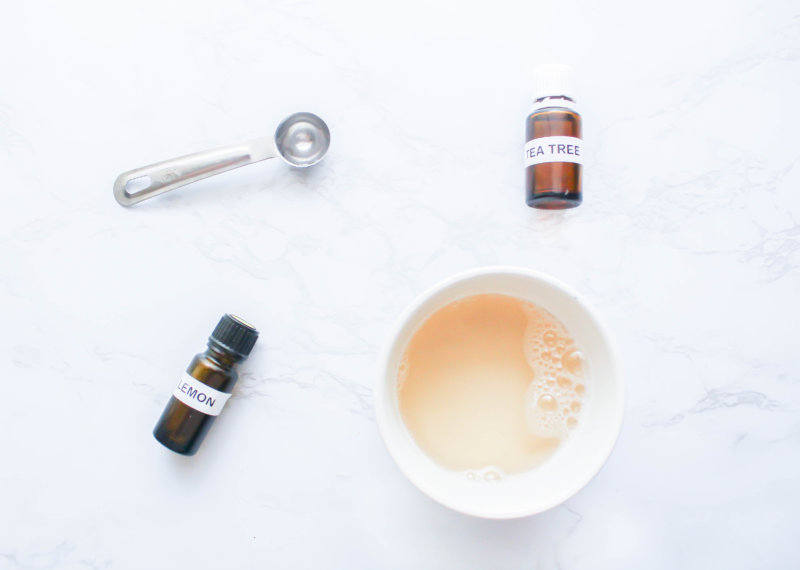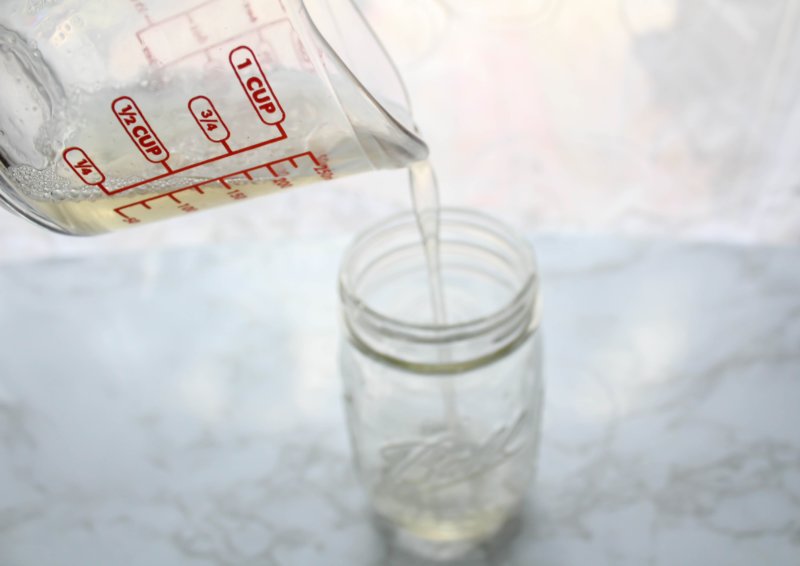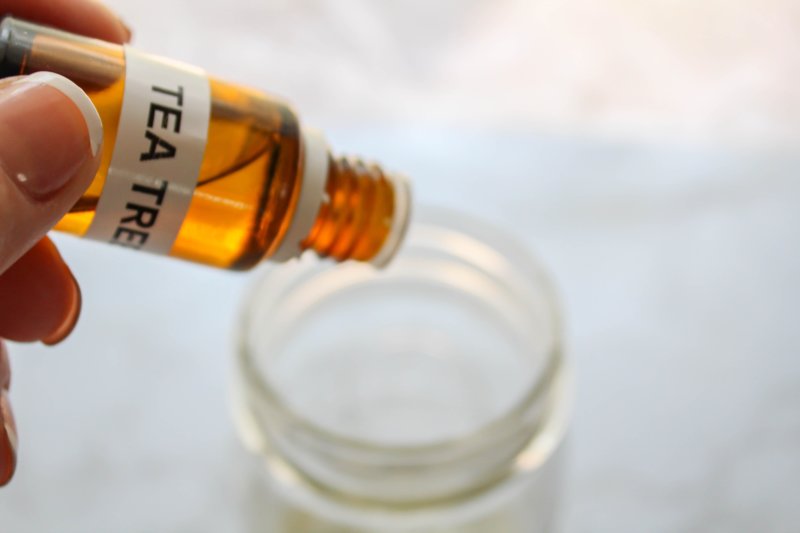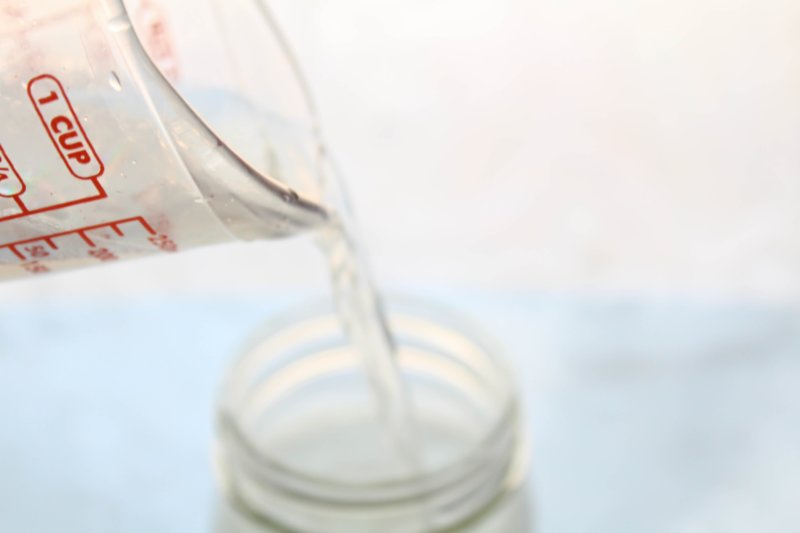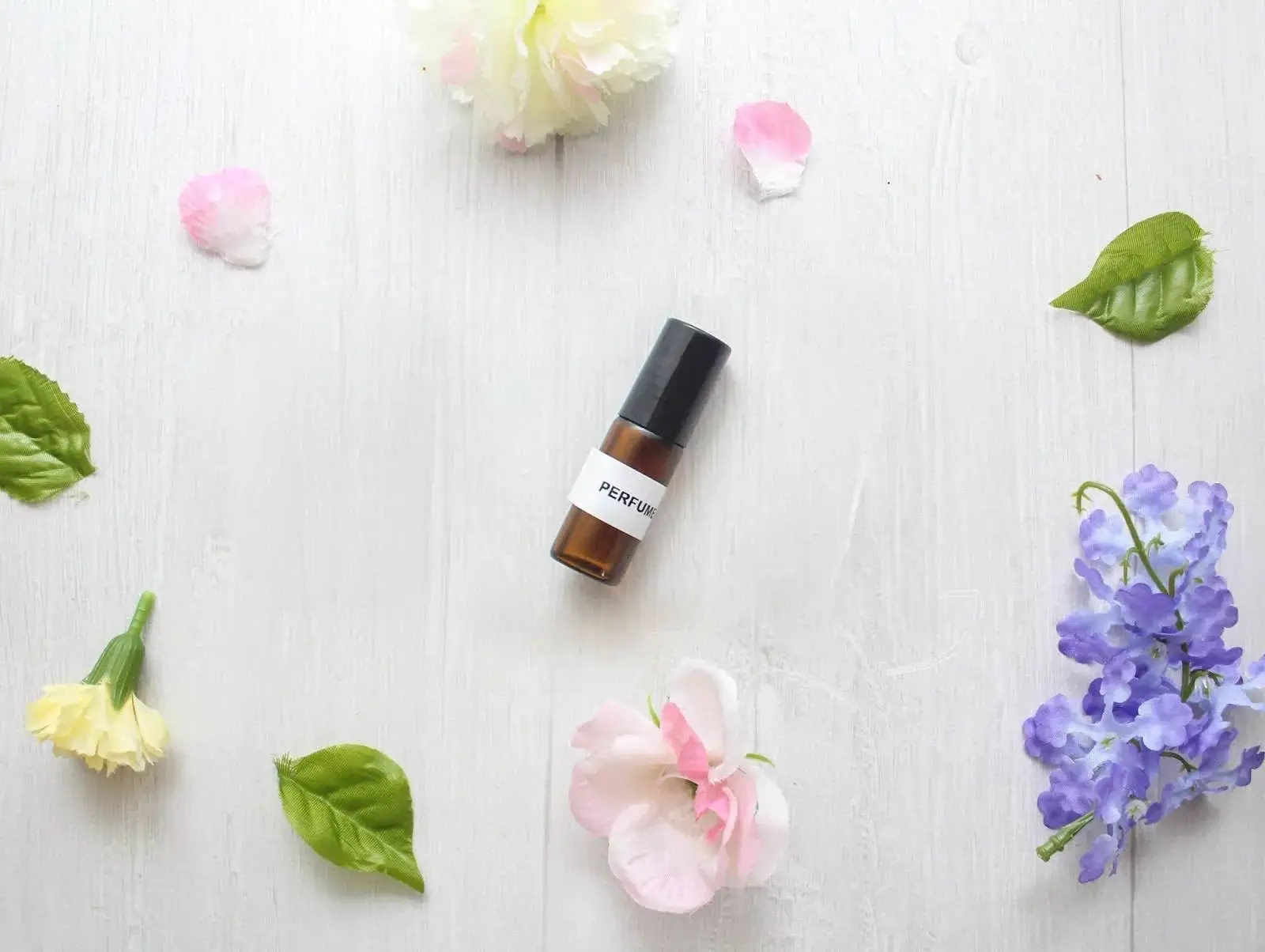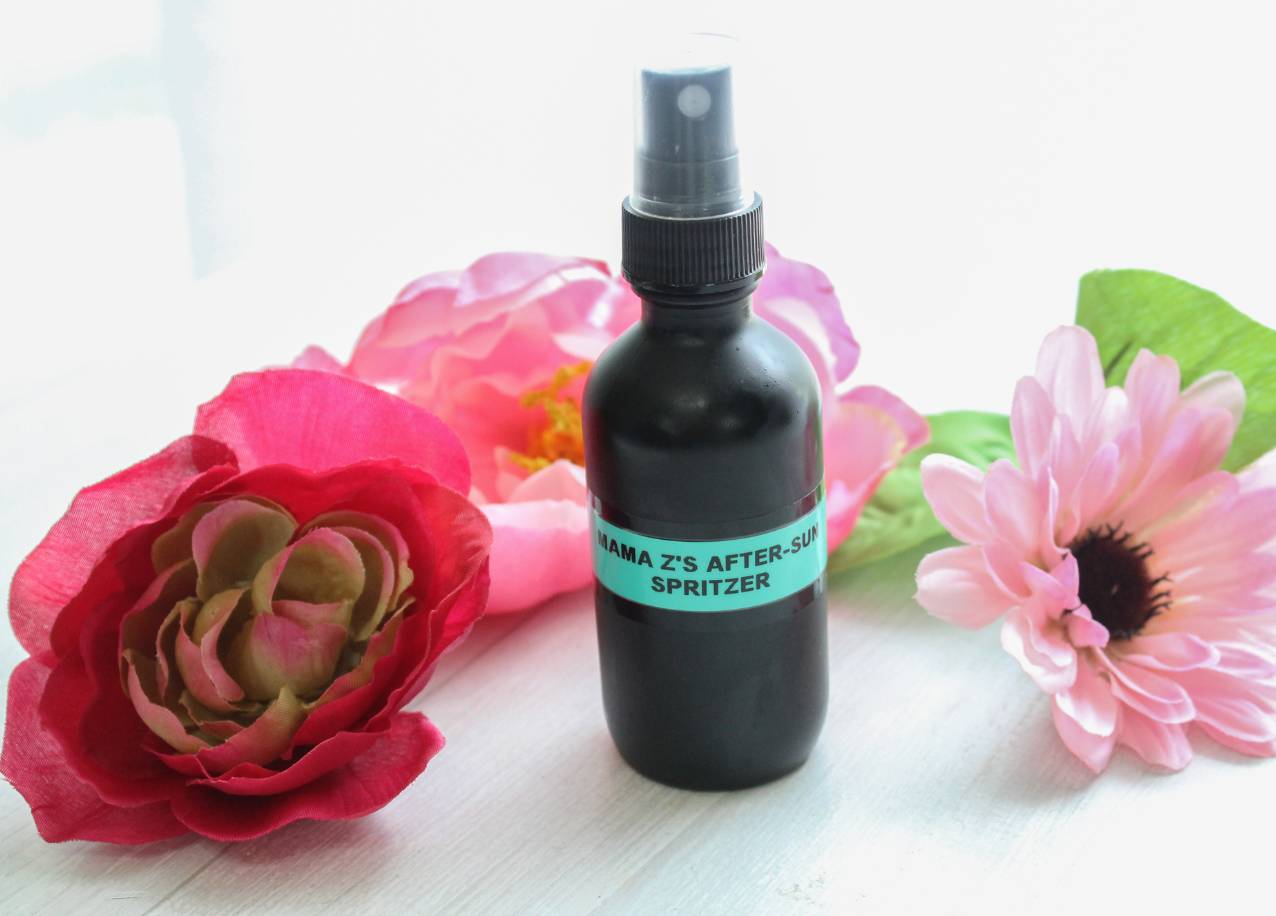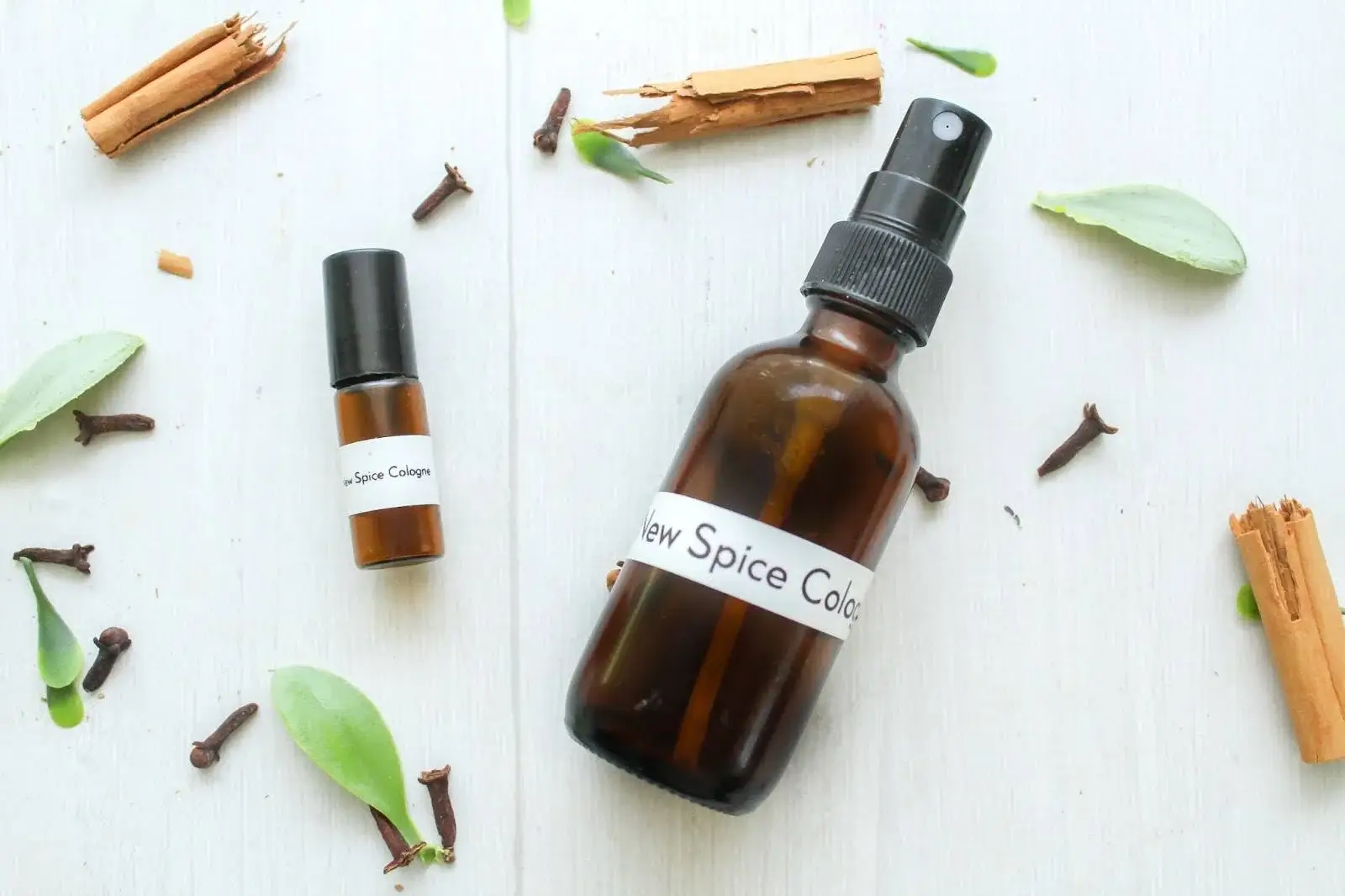When detoxing your home of harmful chemicals, one of the first areas you should tackle is the kitchen. The chemicals you use in the kitchen affect your nutritional diet, as fumes and particles contaminate food. Dish soap is an area to be extra vigilant in because you can literally end up eating whatever you put on your dishes. This all-natural homemade dish soap recipe will clean stubborn food messes and leave dishes sparkling.
The best part? It contains no toxins, so even little ones can help with chores worry-free.
Table of Contents
3 Toxins in Conventional Dish Soap
Crazy amounts of toxins are hiding in the kitchen, starting with your cleaners! Here are a few of the top offenders in conventional dish soap.
1. Sodium Lauryl Sulfate
Sodium lauryl sulfate or SLS is responsible for creating bubbles in dish soap. These bubbles are a trick used by manufacturers to trick your mind into thinking surfaces are truly clean. The truth is that bubbles have nothing to do with the effectiveness of a cleanser.
SLS causes significant skin irritations, and it can also affect the eyes and lungs. (1) If you’ve ever gotten soap in your eyes, you know just how painful SLS can be! On top of being a health hazard, this toxin is also horrible for the environment.
2. Amines
Amines are in the same family as ammonia, a harsh substance that can cause a chemical gas reaction when mixed with other cleaning agents. Actually, if you look at the back of most dish soap bottles, you’ll find a hard-to-spot warning not to mix it with bleach. (2)
When you combine these chemicals, you get a toxic reaction that affects the lungs and mucous membranes. As a parent of little ones who like to “experiment” in the kitchen, this toxin is very concerning.
3. Synthetic Fragrances
Synthetic fragrances are a common ingredient in most dish soaps. Many people associate doing dishes with a particular smell, and manufacturers bank on that. Most find at least one fragrance element irritating, with the most common side effects being skin irritations. (3)
These toxins don’t just affect the skin, though. They seep through the epidermis and affect other systems, including the nervous system. (4) Essential oils are a safer option for fragrance. They smell amazing, and they can benefit your body in ways that plain old toxins can’t.
Other Toxins to Keep in Mind
- Water: Water is an essential part of life, but we’ve learned that not all water is created equal. Tap water can be full of unseen chemicals linked to obesity, congenital birth disabilities, and more.
- Cookware: Your sink could be filled with toxic cookware. Some of the best-selling pots and pans are actually harmful to your health.
Tips for Sparkling Clean Dishes
- Scrape leftover food into the garbage before putting dishes into the sink. This extra step prevents a lot of drain clogs!
- Wash a few dishes at a time, starting with items that aren’t super dirty, like glasses.
- Drain the water often, so dishes get as clean as possible.
- Rinse dishes well to eliminate soap residue.
- You can soak heavily soiled dishes in hot water to help loosen dried food.
- If you have pans with stuck-on food, you can use baking soda or salt to scrub away the mess gently.
- If you have glasses that look cloudy, you can fill the rinsing side of the sink with warm water and a dash of organic white distilled vinegar. This should help dissolve hard water stains and make glasses sparkle.
Homemade Dish Cleaning Ingredients
This recipe contains all-natural ingredients that get dishes sparkling clean. It turns a daunting task into a mini aromatherapy session! You’ll love the uplifting citrus scent.
Organic Unscented Liquid Castile Soap: This is our recommendation for any DIY involving soap. It gets surfaces clean, without toxins!
Organic Vegetable Glycerin: This ingredient helps your dish soap get extra bubbly. This dish soap doubles as an economical bubble solution for kids. You don’t need sodium lauryl sulfate to get excellent suds!
Lemon Essential Oil: This essential oil can help deodorize dishes and remove tough stains. I love using lemon essential oil in DIYs because it’s an instant mood booster. If you do your dishes at night, as I do, you’ll enjoy a more restful sleep, thanks to the calming power of this oil. (5)
Tea Tree Essential Oil: This clean-smelling essential oil can instantly freshen a space. It has antimicrobial properties that make it great at killing germs. Tea tree essential oil can also help fight off mold and other types of fungi! (6)
Lemon Eucalyptus or Lemon Myrtle Essential Oil: While these essential oils sound like a blend, they come from a particular tree. Both of these oils are lovely cleaning agents as they help repel insects and sanitize surfaces. (7)
How to Make Dish Soap with Essential Oils
This dish soap comes together in minutes! I always have a batch of this homemade dish soap recipe on hand, and I’ve even gifted it to loved ones. It makes a beautiful housewarming gift when paired with a new scrubbing brush, gloves, and sponge.

Homemade Dish Soap Recipe With Essential Oils
Quantity
Ingredients
- ½ cup organic unscented liquid castile soap
- 2 teaspoons organic vegetable glycerin
- 6 drops lemon essential oil
- 4 drops tea tree essential oil
- 4 drops lemon eucalyptus OR lemon myrtle essential oil (or 2 drops each)
- Purified OR distilled water, as needed
Supplies
Instructions
- Pour the organic unscented liquid castile soap and vegetable glycerin into the glass bottle. I recommend using a glass bottle with a pump or a foaming soap dispenser.
- Add the essential oils of choice to the bottle. If you don’t have the essential oils listed, any citrus oil works beautifully.
- Fill the bottle the rest of the way with distilled water. Be sure to allow room for the pump, or your mixture will overflow! Replace the top and close tightly.
Step One: Add Soap and Glycerin to the Bottle
Pour the organic unscented liquid castile soap and organic vegetable glycerin into the glass bottle. I recommend storing your homemade dish soap recipe in a glass bottle with a pump or a foaming soap dispenser. You can purchase lids that turn any mason jar into a foaming dispenser on Amazon.
Step Two: Add Essential Oils
Add the essential oils of choice to the bottle. If you don’t have the essential oils listed, any citrus oil works beautifully.
Step Three: Fill With Water
Fill the bottle the rest of the way with distilled water. Be sure to allow room for the pump, or your mixture will overflow! Replace the top and close tightly. Use as you would any other dish soap. Enjoy your clean, toxin-free dishes!
- https://pubmed.ncbi.nlm.nih.gov/16787454/
- https://www.ewg.org/guides/cleaners/3007-DawnUltraConcentratedAntibacterialHandSoapDishwashingLiquidAppleBlossom/
- https://pubmed.ncbi.nlm.nih.gov/29256904/
- https://pubmed.ncbi.nlm.nih.gov/26354370/
- https://pubmed.ncbi.nlm.nih.gov/21134357/
- https://pubmed.ncbi.nlm.nih.gov/23495848/
- https://www.ncbi.nlm.nih.gov/pmc/articles/PMC3059459/




